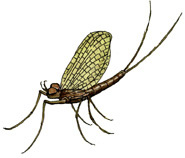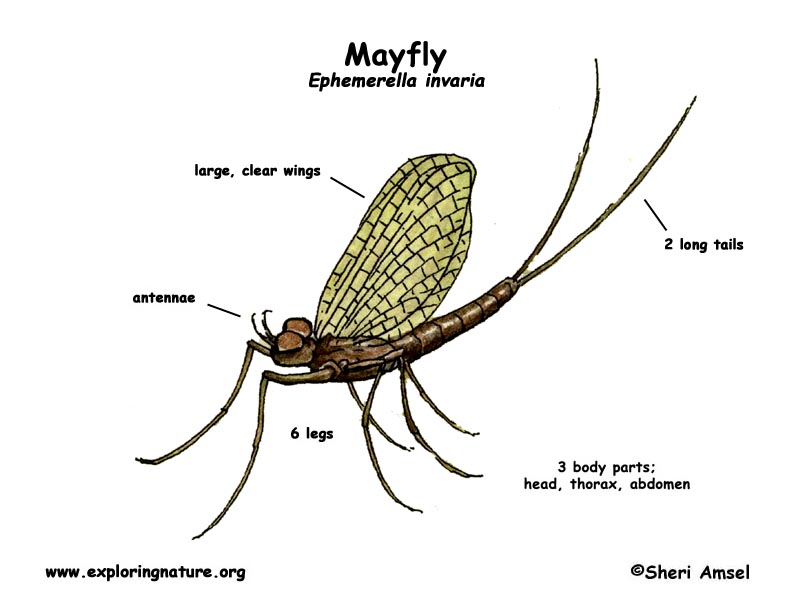

There are more than 700 species of mayfly in North America. They are found all over North America.
They live in and over clean lakes and rivers.
There can be many sizes. They are usually reddish-brown with large, clear wings. The wings have lines in them. They have 2 long tails.
Adult mayflies dance above water, mate, lay eggs and die in just a few hours. The young phase nymphs live for 2-3 years.
They only eat when they are in their young phase (nymph) in the water. Adults have no mouthparts for feeding at all.
Adults swarm over the water and then mate. Females lay eggs while they fly low over the water or they actually go under the water to lay eggs on water plants. The eggs hatch and young phase mayflies (larvae or nymphs) live in the water and eat algae and whatever settles to the bottom of the water.
Kingdom: Animalia
Phylum: Arthropoda
Class: Insecta
Order: Ephemeroptera
Suborder: Furcatergalia
Family: Ephemerellidae
Genus: Ephemerella
Species: E. invaria
When you research information you must cite the reference. Citing for websites is different from citing from books, magazines and periodicals. The style of citing shown here is from the MLA Style Citations (Modern Language Association).
When citing a WEBSITE the general format is as follows.
Author Last Name, First Name(s). "Title: Subtitle of Part of Web Page, if appropriate." Title: Subtitle: Section of Page if appropriate. Sponsoring/Publishing Agency, If Given. Additional significant descriptive information. Date of Electronic Publication or other Date, such as Last Updated. Day Month Year of access < URL >.
Amsel, Sheri. "Mayfly" Exploring Nature Educational Resource ©2005-2024. December 14, 2024
< http://mail.exploringnature.org/db/view/260 >

